For the three months after graduation I diligently fired off my resume and portfolio to every job I was remotely qualified for. I figured this was a numbers game, so I cast my net wide…
… and heard nothing.
Nada. Not the slightest glimmer of interest from any of the companies that I applied to. I grew frustrated and insecure. I started to question my talent and choice of career.
Was it my resume? My portfolio? Or was I just not good enough to land even the most junior role in the tiniest of companies?
I hated that feeling of complete bewilderment.
Miraculously, I made it through because someone along the way took a chance on me. But it wasn’t because I made it easy for anyone to recognise the value I brought to the table. I remember myself as a really eager but misguided designer, and I probably made it damn near impossible for myself.
Having now had experience on both sides of the interview table, I’ve learned that getting very specific and clear about three things can easily separate you from the pack.
Before designing your UX portfolio, it’s essential to be clear about these three things:
- Understand your value. Decide which role you’d be most effective in and what you’d most enjoy.
- Determine a target company. Figure out which design environment will best allow you to flourish.
- Know how your skills connect with your target company’s true needs.
Understand your value
Most designers describe themselves as people who “create interactive wireframes, perform user research or write front-end code.” But let’s be fair, anyone who has completed an online course can say that.
Without being able to understand and articulate your unique value, it can look like you’re just collecting skills without any real understanding of how the total package will work to solve a company’s stickiest design problems. Add to that the fact that many aspiring designers continue through the job search with only a vague idea of what the various job titles really mean within the wide world of UX.
There are a few problems with this approach:
- It’s difficult for the hiring manager to understand what it’s really like to work with you
- There’s no clear story as to why your package of skills is particularly valuable for the role they’re looking to fill
- The job you applied might not turn out to be the job you were expecting
- It creates the perception that you are the type of designer who does not have—or does not know how to communicate—a clear design process
The result is a lot of wasted effort and an incoherent portfolio.
You might be asking, “So Christine, how does one know oneself? Do you suggest I spend a year meditating on a Himalayan mountain?”
Luckily for you, the answer is no. It’s much easier than that, but it involves doing some research – both online and offline. The current landscape in UX is still being defined, and job titles and descriptions aren’t always consistent across the industry. If you’re trying to transition into UX, you also quite likely have transferrable skills from another career that you need to take into account.
A good place to start is by checking out job descriptions online. But don’t stop there. You’d be surprised at how much insight you can get just by using LinkedIn. Run a search of UX roles in the member directory, and take note of how people’s job titles match up (or don’t match up) to their actual responsibilities.
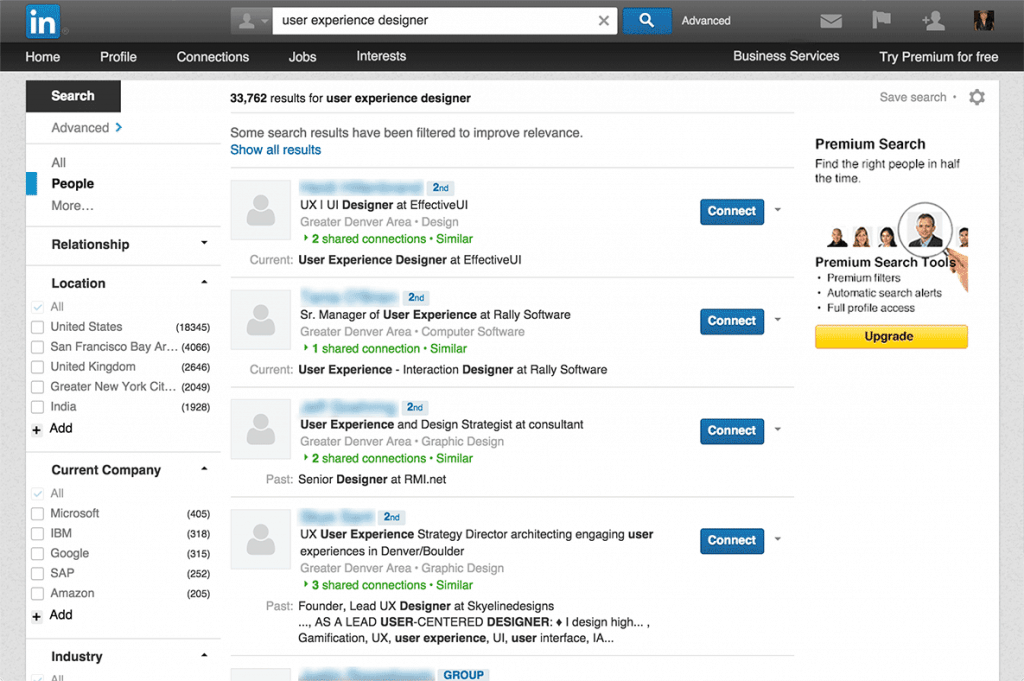
Additionally, you can use LinkedIn to connect with other designers in your network who might be in roles you’re interested in. From there, you can reach out to them to ask deeper questions about what a typical work week is like, what problems they’re asked to solve regularly and whether their day to day responsibilities are a good match to your skill set.
After you’ve settled on a primary role, you can move onto determining a few target companies.
Determine your target company
One of the reasons why I love being a designer is that it’s a role that allows me to thrive in many different environments.
This flexibility is a double-edged sword—it means that your experience, career satisfaction, and rate of growth is highly dependent on the type of environment you work within every day. A hiring manager is going to prioritize certain skills over others, and many of these skills may be soft skills that aren’t always spelled out in the job description. So it’s to your benefit to have their concerns in mind when designing your portfolio.
When narrowing down your target companies, repeat the research cycle: use LinkedIn, and leverage your network by conducting informational interviews. At this stage, you’ll need to determine the following:
- What type of company would you like to work for? e.g: Client services / advertising agency, consultancy, in-house design department, SaaS company, etc.
- What size company?
- What industry piques your interest?
After you narrow down the type of design environment you’d be most interested in working in, it’s time to focus on a handful of companies and find out what their true needs are beyond what they list on their job descriptions.
Again, reach out to people that currently work or have worked in the past at your target companies (via LinkedIn), and ask them to coffee. This may sound scary, but it’s crucial. If your contact can’t commit to an in-person meeting, a 30-minute call would work. As a last resort, you could send your questions via email.
To get a conversation going, I find it really helpful to ask questions like:
- What is the hardest part about hiring for this position?
- Could you describe a typical work week or project lifecycle?
- What is the team dynamic like? Can you explain the level of collaboration involved?
Every environment will have different requirements. This is your chance to understand what those needs are, so you can design a resume or portfolio that speaks to a hiring manager.
Connect your skills with their true needs
Now that you know precisely what role(s) you’re suited for and the types of companies you’re going to target, you’re in a perfect position to design a portfolio that effectively outlines why you’re the perfect candidate for the job you want. Here’s an example of how you could use the information you’ve gathered to connect the dots.
Say you’re a Senior UX Designer targeting business-to-consumer SaaS companies, that have an existing product. They already have two other designers in place. Through your research, you find out that they want to know the following about a candidate:
- How you go about identifying usability problems.
- How you would optimize the design based on research findings.
- To see examples of measured results from those efforts.
You can now tailor each case study so that it effectively addresses these questions.
Here is a walkthrough of how I would approach each of the hiring manager’s questions:
Question 1: How do you identify usability problems?
What they’re looking for specifically
Experience with testing methods and whether the methods were effective
Your Strategy: What you would put in your portfolio
In your case studies, you need to make sure you add any testing methods you used and not gloss over this point. Testing shouldn’t be just a bullet point in a list.
The Tactic: Example
The design team was typically three to six months ahead of our development team so we had time to test major features and workflows using interactive prototypes with at least five of our users. Typically, our usability tests were performed remotely with a video camera and recorded.
Question 2: How would you optimize the design based on your findings?
What they’re looking for specifically
Examples of good decisions you made to optimize a design
Your Strategy: What you would put in your portfolio
At least one or two key examples where you made an impact on the product as a direct result of your decisions.
The Tactic: Example
Based on our metrics, the rate of mobile registrations was nearly zero. Mobile and desktop usage numbers were fairly equal, so we realized that it likely had something to do with the number of fields (and their input methods) that were required on mobile.
Confirmed by our usability tests, we knew it was the right decision to remove all but three fields for the mobile platform.
Question 3: What are some examples of the measurable results from your efforts?
What they’re looking for specifically
Does the work you do tie into the goals of the company?
Your Strategy: What you would put in your portfolio
Specific numbers or even qualitative data that confirms you’re doing something right
The Tactic: Example
Since the number one goal was growth, we knew that user registrations needed to be a priority. Since we began performing usability tests before implementation, we saw a 45% increase in customer registrations on the mobile platform.
Once you’ve mapped the key points to address, it’s much easier to choose screenshots or links to support your story. Approaching it this way paints a more full and focused picture of your unique value.
Quality over quantity
The system I’ve described is based on doing your homework before you even begin designing your portfolio. It’s tempting to skip, but hopefully you’ll see that talking to people, understanding your target market and speaking to their needs puts you in a totally different class.
The best part is that once you’ve done the research, designing your portfolio will be much easier. You’ll be armed with information that will help direct how you frame your case studies, which projects and deliverables to show, and ultimately generate interest from your target companies.
I wish you all the best in your job hunt!

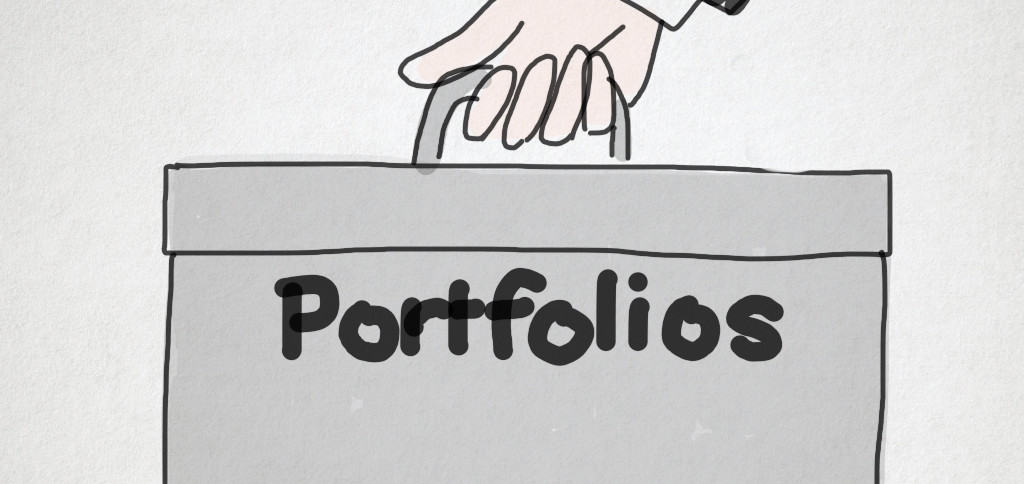
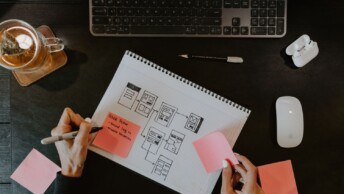
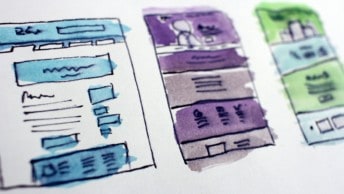
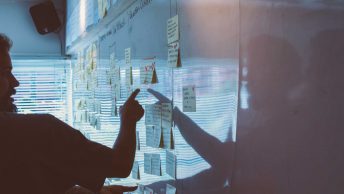

Hi Christine, Great tips, Many thanks. P
Thanks for the tips :)
Sincerely,
someone who just graduated from a visual communication course